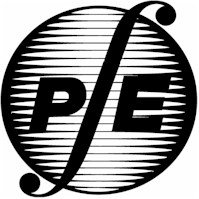Idaho Society of Professional Engineers
Friday Update 09/01/06
UPCOMING EVENTS:
September 11, 2006 ISPE
Northern Chapter September Meeting - **Tentative** Field trip to the
construction site of the bridge over Lake Creek on the "Setters to Belgrove
Project - US 95 south of Coeur dAlene
September 19, 2006
ISPE Southwest Chapter
Noon Luncheon Meeting
September 28, 2006
ASCE Southern Idaho Section Noon
Meeting
October 27, 2006 - PE and PS
Examinations - Boise, Idaho
October 28, 2006 - FS (aka
LSIT) Examination - Boise, Idaho, Pocatello, Idaho, Moscow, Idaho
October 28, 2006 - FE (aka EIT)
Examination - Boise, Idaho. Pocatello, Idaho, Moscow, Idaho
February 6 10, 2007
Idaho Society of Professional Land
Surveyors Conference - Coeur d' Alene Casino - Worley, Idaho
ENGINEERS GEAR UP FOR SCHOOL
In the coming months, NSPE will be hosting several opportunities for education
and ethics professional development hours.
SEPTEMBER
September 13, 12:301:30 p.m. EDT
NSPE Web Seminars: Ethics Forum
Protection of the Public Health and Safety
Session 1: Sustainable Development and the Environment
Register
today!
September 26 1:30 - 3:00 p.m. EDT

Presents: Toxic Mold 101, Randy Rakoczynski, P.E., F.NSPE
The presentation will deal with an introduction into the world of mold, which
species of mold are "toxic" and how one goes about conducting a survey of
suspected mold contamination and the options available to remediate mold
problems in residential, commercial and industrial structures
Register Now!
TECHNOLOGICAL LITERACY: IS THE U.S. FALLING BEHIND?
The National Academy of Engineering and the National Research Council are
calling for an in-depth assessment of the technological literacy of K12
students and teachers as well as out-of-school adults. The committee that
conducted the report recommends both creating new assessments and integrating
technology-related items into existing assessments, such as the Trends in
Mathematics and Science Study. In addition, it suggests that the National
Science Foundation fund studies of technological literacy in K12 students that
target different geographical areas, socioeconomic statuses, and so forth. Also,
because students cannot improve their technological literacy with teachers who
have low literacy levels, the report recommends that the NSF and the Department
of Education fund teacher assessments as well. Until technological literacy is
assessed in a rigorous, systematic way, the committee says, its unlikely to be
a priority for policy makers, educators, or citizens.
Read the
complete article in the August/September PE magazine.

MATHCOUNTS PROBLEM OF THE WEEK
Can you solve this MATHCOUNTS problem? The answer will appear in next week's
edition of the Friday Update!
Black Crater Wildfire
The Black Crater Wildfire in Central Oregon was started by a lightning strike on
July 23, 2006. Reports on the size of the fire were issued by The Oregon State
Fire Marshall as shown below.
Date
Fire Size (in acres)
July 27 350
July 28
2684
July 29
4727
July 30
5700
July 31
9000
Aug 1 9200
Aug 2 9200
The data shows how the fire grew. Between which two dates did the fire show the
greatest growth in acres? By how many acres did the fire grow between those
dates?
Between which two dates did the fire show the greatest percentage increase? By
what percent did the fire grow between those dates?
Are the dates for the greatest acreage increase the same as the dates for the
greatest percentage increase? Explain why.
--------------------------------------------------------------------------------
The Black Crater Wildfire was contained in early August and burned 9400 acres.
There are 640 acres in a square mile. How many square miles did the fire burn?
Express your answer to the nearest tenth.
--------------------------------------------------------------------------------
The projected cost to fight the 9400 acre fire is $9,300,000. What is the
projected cost per square acre to fight the fire? Express your answer to the
nearest hundred.
Answer to last weeks MATHCOUNTS problem:
There are many possible routes to follow that let you cross each bridge once.
The organizers of the event directed the riders to cross the bridges in the
following order: Morrison, Sellwood, Hawthorne, Ross Island, Marquam, Burnside,
Broadway, Fremont, St. Johns, and Steel.
--------------------------------------------------------------------------------
Each rider will eat 3 bananas. Multiply 3 times the 18000 riders to find the
number of bananas that are needed. Dividing the number of bananas by 5 bananas
per pound will give the number of pounds of bananas that need to be ordered. (3
x 18,000) ๗ 5 = 10,800 pounds of bananas
Each rider will drink 3 bottles of water. Multiply 3 times the 18,000 riders to
find the number of bottles of water that are needed. Dividing the number of
bottles by 24 bottles per case will give the number of cases of bottled water
that need to be ordered. Since 3 x 18,000) ๗ 24 = 2250, expressing the answer to
the nearest hundred gives us 2,300 cases of water to be ordered.
--------------------------------------------------------------------------------
The express riders are expected to travel at a speed of at least 15 miles per
hour. Using rate x time = distance, we have 15 x t = 36. Dividing both sides by
15 yields t = 2.4 hours. Multiplying 0.4 times 60 will give us the number of
minutes. The longest time an express rider should be on the course is 2 hours
and 24 minutes. Starting at 6:30 am, an express rider should be finished by 8:54
am.
A rider starting at 7:45 am and finishing at noon would be on the course for 4
hours and 15 minutes or 4.25 hours. Dividing the distance, 36 miles, by the
time, 4.25 hours, we find the average speed to be 36 ๗ 4.26 = 8.47. Expressing
the answer to the nearest tenth gives 8.5 miles per hour.
If you want to see last week's problem again, click
http://www.mathcounts.org/webarticles/anmviewer.asp?a=884&z=107
Idaho Society of Professional Engineers
PO Box 170239
Boise, ID 83717-0239
208-426-0636
Fax: 208-426-0639
E-Mail: ispe@idahospe.org
Web Site: www.Idahospe.org
 Idaho
Society of Professional Engineers
Idaho
Society of Professional Engineers